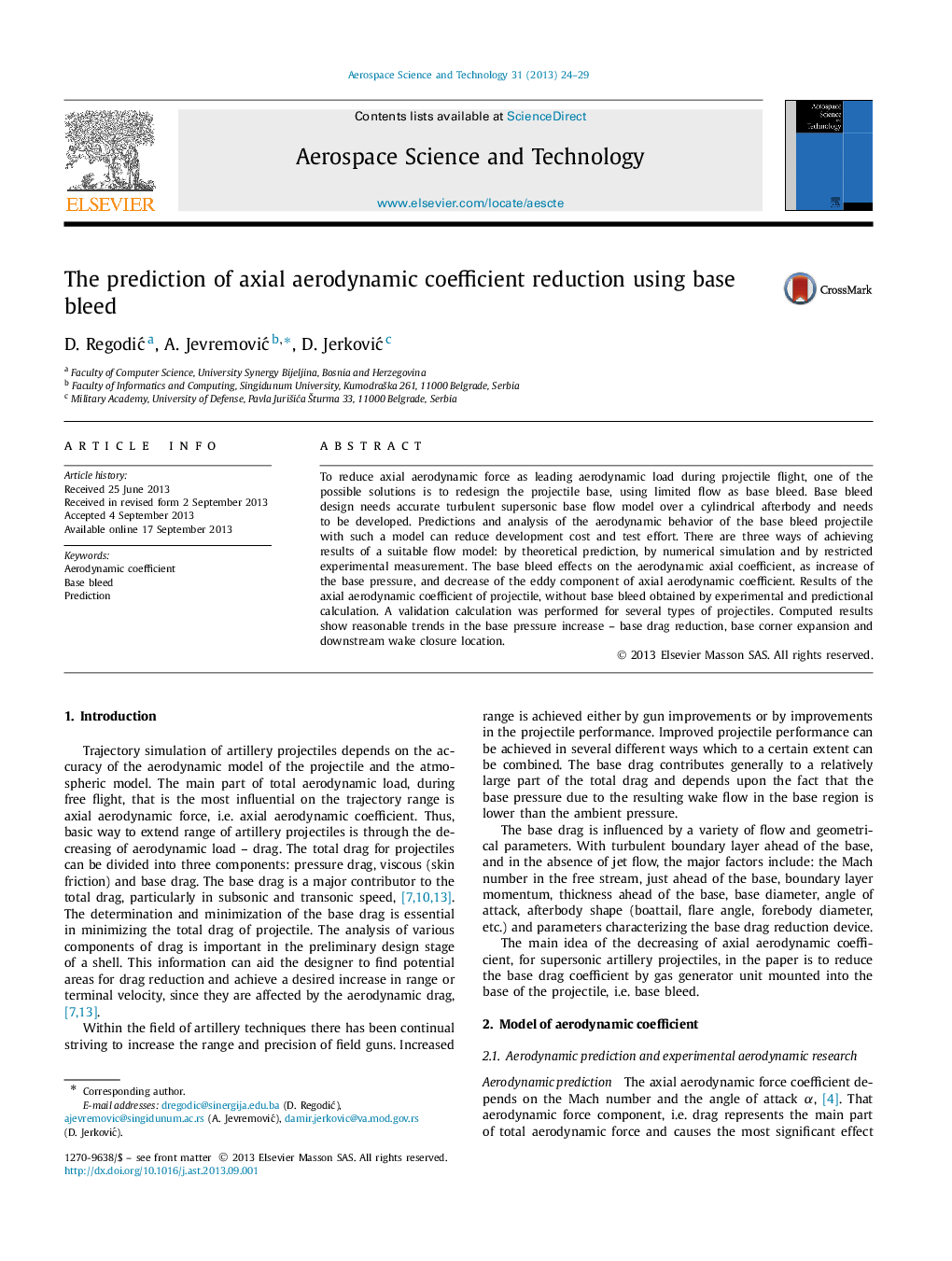| Article ID | Journal | Published Year | Pages | File Type |
|---|---|---|---|---|
| 1718182 | Aerospace Science and Technology | 2013 | 6 Pages |
To reduce axial aerodynamic force as leading aerodynamic load during projectile flight, one of the possible solutions is to redesign the projectile base, using limited flow as base bleed. Base bleed design needs accurate turbulent supersonic base flow model over a cylindrical afterbody and needs to be developed. Predictions and analysis of the aerodynamic behavior of the base bleed projectile with such a model can reduce development cost and test effort. There are three ways of achieving results of a suitable flow model: by theoretical prediction, by numerical simulation and by restricted experimental measurement. The base bleed effects on the aerodynamic axial coefficient, as increase of the base pressure, and decrease of the eddy component of axial aerodynamic coefficient. Results of the axial aerodynamic coefficient of projectile, without base bleed obtained by experimental and predictional calculation. A validation calculation was performed for several types of projectiles. Computed results show reasonable trends in the base pressure increase – base drag reduction, base corner expansion and downstream wake closure location.
